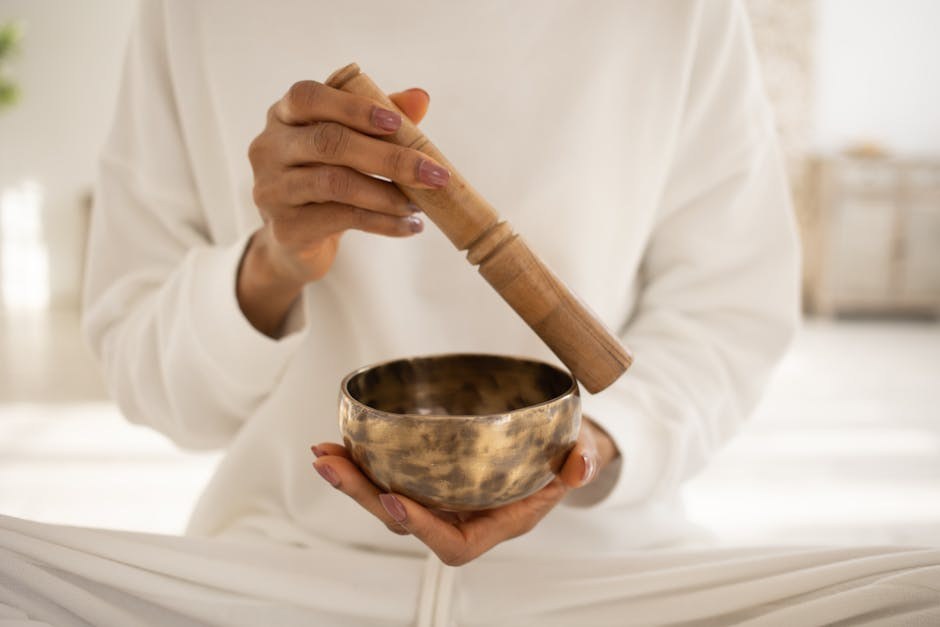People talk about sex with wild grins and whisper about intimacy with tender smiles – yet many of us still wonder whether the label we use changes the experience. Some nights feel playful and raw; others feel slow, attentive, almost reverent. The activities may overlap, but the intentions differ. This article explores how making love contrasts with having sex, why the words stir such strong reactions, and how couples can keep desire alive without letting language turn into pressure. The aim isn’t to crown a winner – it’s to understand the textures of connection so you can choose what fits the moment, your relationship, and your needs.
What We Mean When We Say We Want More Than Sex
When someone says they want making love, they usually mean they want more than release – they want presence. They want an exchange that acknowledges the person in front of them, not just the body. In that sense, making love is less about choreography and more about how attention is distributed. You can try the same kiss at the same pace and still notice a difference: during making love, the kiss often carries a quiet focus, a patience that lets the moment expand; during sex that’s purely physical, the kiss can feel like an eager bridge to the next sensation.
None of that makes one style morally superior. It simply highlights a preference – sometimes your body asks for warmth and lingering touch, other times it asks for urgency. Because making love centers connection, it can feel gentler, slower, and heavy on foreplay. Sex that is more casual can feel direct – a delicious sprint rather than a winding walk. Both are valid. The tension shows up when partners value different modes at different times.

Language Shapes Expectation
Words prime the nervous system. When you hear “Let’s have sex,” your mind might anticipate spontaneity, friction, and quick release. When you hear “I want making love tonight,” you might expect eye contact, unhurried touch, and aftercare. The label creates a map – not a prison – and that map guides the mood in the room. If the map promises closeness and the experience feels rushed, disappointment grows. If the map promises playful heat and the moment turns solemn, the energy can stall. That’s why saying what you’re hoping for – tenderness, novelty, speed, depth – improves the night before anything physical begins.
Labels also carry history. For some, making love evokes safety and devotion; for others, it signals pressure to perform intimacy they don’t yet feel. Similarly, “just sex” can sound excitingly free or emotionally distant depending on context. When couples name the meaning beneath their words – “I want to feel chosen,” “I’m craving a spark,” “I need reassurance,” “I’m in the mood to be playful” – they turn vague terms into usable guidance.
What Connection Looks Like in Practice
So what actually happens differently during making love? Think of it as a shift in attention rather than a strict set of techniques. There’s more time spent reading subtle cues – breath, micro-movements, small sighs – and responding rather than rushing. Touch lingers, and partners adjust as if they’re listening with their hands. You might change pace without words. You might pause to savor a blush on the skin, or to offer a reassuring squeeze.

Having sex without that focus can still be wonderful – just distinct. The energy is bolder; the goal is clearer. You might flirt, tease, and then move decisively. You might experiment with locations, angles, or timing that would feel out of place during making love. Where making love feels like an unfolding conversation, this mode can feel like a daring game – two people chasing a rush together.
First Encounters, New Partners, and the Puzzle of Chemistry
Early encounters come with delightful confusion. When you don’t yet know someone’s rhythm, even kissing can feel like a puzzle – who leads, who follows, which tempo fits. In that scenario, making love may be rare at first because connection needs time to develop. Chemistry helps, of course, but misaligned habits can stall otherwise promising moments: one partner moves slowly while the other anticipates a switch-up; one prefers whispered check-ins while the other prefers wordless improvisation.
Over time, familiarity smooths the edges. You learn who likes to take initiative and who enjoys surrender. You learn that a certain look means “Don’t change a thing,” while a certain inhale means “More pressure.” As you trade feedback, sex often grows more satisfying – and making love becomes easier because you can relax into trust. Even casual arrangements can deepen physically once preferences become known, which is why friends with benefits sometimes drift toward feelings – closeness is a side effect of tuned attention.

Comfort Reduces Awkwardness – and That Changes Pleasure
Awkwardness is normal when partners are new to each other. The pelvis questions, the hands hesitate, the pace wobbles. A sense of play helps. It’s easier to laugh at a missed cue when you aren’t trying to prove anything. In relationships with established trust, making love benefits from that ease – there’s less second-guessing and more presence. The body reads confidence as safety, and safety allows arousal to expand rather than contract. That’s one reason making love often feels richer: security lets partners savor rather than rush.
Why Tenderness Can Feel Intense
Making love combines erotic pleasure with the emotion of care. That duo can heighten sensation – a slow caress lands differently when it carries the message “I know you, I see you.” The brain doesn’t separate meaning from touch; the story you tell yourself about what’s happening colors the experience. During making love, that story often centers on exclusivity, affection, and significance. During casual sex, the story might center on novelty, daring, and appetite. Both stories can be hot, just in distinct ways.
Because attention is the secret ingredient, long foreplay tends to show up naturally during making love. The lead-in becomes part of the destination – not a hurdle. Eye contact lingers. Hands wander with patience. There’s room for pauses – not the awkward kind, but the kind that says, “Stay right there.” The result is a sensation that feels layered rather than singular.
Setting and Style: Where Each Mode Shines
The environment shapes tone. Bedrooms invite softness; cars and showers invite spontaneity. If you’re craving making love, settings that feel private and comfortable help – familiar sheets, warm lighting, music that doesn’t distract. There’s no rule that certain positions are reserved for tenderness; rather, the same position can carry a different feeling depending on pace and intention. A so-called “classic” position can feel profoundly intimate when paired with slowed breathing and hands that linger. The same position can feel wild when movement is urgent.
By contrast, if you both want a quick hit of adrenaline, you might choose places that interrupt routine – not to collect outrageous stories, but to wake up your senses. The point isn’t danger; it’s novelty. Even then, the spirit of making love can tag along – a quick squeeze of the hand, a mischievous smile that says “I’m with you.” Small gestures keep connection present even during rougher play.
When Desire and Emotion Fall Out of Sync
Sometimes couples default to only one mode. If every encounter aims for making love, the ritual can feel overly careful. Desire thrives on contrast – softness feels softer next to sharp edges; slowness feels slower after a sprint. When tenderness is the only flavor, partners may feel deeply cared for yet oddly under-stimulated. If every encounter is quick and high-voltage, closeness can fade. The sweet spot lives in rotation.
An honest check-in helps: “Which part of me do you want tonight – the part that needs comfort or the part that wants chaos?” Naming it lowers pressure. On nights when emotional closeness feels far away, opting for straightforward sex can still be connecting – especially if you pair it with one deliberate gesture from the world of making love, like unhurried aftercare or a moment of stillness together. Likewise, on nights when the heart is front and center, adding a streak of playfulness can keep things from becoming predictable.
How to Ask for What You Want Without Killing the Mood
Many people worry that explicit requests will shatter the atmosphere. Paradoxically, directness is sexy because it removes guessing. Instead of “We never make love anymore,” try “Could we slow down tonight? I’m craving making love – eye contact, long foreplay, a quiet finish.” Instead of “You’re too gentle,” try “I’m in the mood for speed – let’s save making love for later and keep this one playful.” Requests framed as desires rather than criticisms inspire curiosity.
During the moment, short phrases beat long speeches. “Stay there.” “Softer.” “Don’t stop.” “Look at me.” These tiny cues are the grammar of making love. They’re also useful during more casual sex – precision is kind to both people. If words feel awkward, guide with hands. If hands feel unclear, breathe louder to mark what works.
Touch, Pace, and Attention: The Building Blocks
Think of intimacy as three adjustable dials – touch, pace, attention. When you’re aiming for making love, the attention dial turns up first. You notice micro-reactions and follow them. Pace slows – not always, but usually – because you’re tracking the unfolding rather than rushing the finish. Touch changes most: instead of jumping between techniques, you let each stroke land long enough to register. These dials aren’t exclusive to making love; they simply sit in a different configuration compared to a quick encounter.
Partners often discover signature cues that make making love feel unmistakable: a steady gaze, hands anchored at the hips, a habit of returning to a certain kiss between movements. In a more casual, heat-chasing mode, cues might be brighter – a playful command, a sudden shift, a daring change of location. Because bodies love patterns, alternating among familiar cues can keep both modes fresh.
Balancing Novelty and Security
Security says, “You matter.” Novelty says, “This is alive.” Making love usually leans on security – routines, rituals, and predictable tenderness – which allows vulnerability to show up without fear. Purely physical sex leans on novelty – surprise, experimentation, a dash of risk – which pumps excitement through the scene. A satisfied relationship doesn’t choose between them; it lets each teach the other. Bring one surprising element into making love – a new pace, a different room, a playful dare – and it blooms. Bring one steadying element into fast sex – a quiet check-in, a palm pressed to the chest, lingering aftercare – and it deepens.
Common Myths That Get in the Way
Making love is only for long-term couples. Not true. What defines it is intention, not duration. Two people can slip into that mode early if they feel safe and attentive – and long-term partners can miss it if they rush past presence.
Casual sex can’t be intimate. It can, if partners choose to be considerate. A shared laugh afterward, a tender touch before parting – those gestures borrow from making love without demanding a committed story.
Slow equals boring. Slowness during making love is not absence of intensity – it’s concentration. When sensation is allowed to build, the same touch can feel unexpectedly powerful.
Intensity requires roughness. Not necessarily. Focused attention – the hallmark of making love – can create intensity all by itself. Pressure and speed are only two of many levers.
Signals That You’re Drifting Out of Sync
One partner starts avoiding intimacy because it feels too scripted, even when called making love. That’s a sign novelty is starving.
One partner seeks only spontaneous encounters and avoids eye contact or aftercare. That’s a sign connection is thinning and the spirit of making love is missing.
Both partners feel cared for but unaroused – tenderness is intact, spark is low. Bringing a bolder flavor into making love can help.
Practical Ways to Choose the Right Mode Tonight
Check the emotional temperature. If the day was heavy, the restorative quality of making love may soothe frayed edges. If the day felt stuck, a playful, fast encounter might shake off the dust.
Name one element you want. “Eye contact,” “more foreplay,” “rougher pace,” “slower rhythm.” If your word points toward making love, let the rest follow; if it points toward quick heat, build around that.
Pick a setting that matches. Cozy space for making love; novel space for a spirited romp. Small adjustments – lighting, soundtrack, blankets – can tip the mood.
Keep a bridge between modes. After casual encounters, add a moment of stillness. During making love, add one surprising twist. Bridges keep both styles connected rather than divided.
When One Partner Wants Tenderness and the Other Wants Heat
Trade turns rather than split the difference every time. If tonight leans toward making love, let the person craving closeness steer, while the adventurous partner chooses one playful element to include. Next time, flip it – go bold and keep one gentle thread. This back-and-forth preserves fairness and energy. Over the long arc, both intimacy and excitement get fed.
Also, revisit definitions regularly. What felt like making love last year may feel different now – people change, bodies change, stress shifts. Treat your definitions as living, not fixed. The phrase can stretch to hold new practices as long as the core remains: attention, care, and a willingness to listen with your whole body.
Putting It All Together Without Overthinking
At its best, making love feels like a conversation where every word lands – you’re attuned, patient, and curious. At its best, straightforward sex feels like a shared dare – you’re bold, playful, and eager. Most couples are happiest when they can speak both dialects. Let your language set the scene, but don’t become a prisoner to it. If tenderness suddenly turns electric, follow it. If a fast moment asks for a pause, honor it. The label can guide the mood – the bodies decide the details.
When partners learn to toggle – to move from the slow bloom of making love to the bright spark of quick sex and back again – desire stays awake. Some nights you’ll want closeness that stretches time; other nights you’ll want laughter and urgency. What matters isn’t choosing the “right” word – it’s choosing each other, again and again, in the way that fits right now. If you can keep that promise, making love will feel deeper, casual encounters will feel more fun, and the boundary between them will feel less like a wall and more like a doorway you walk through together.